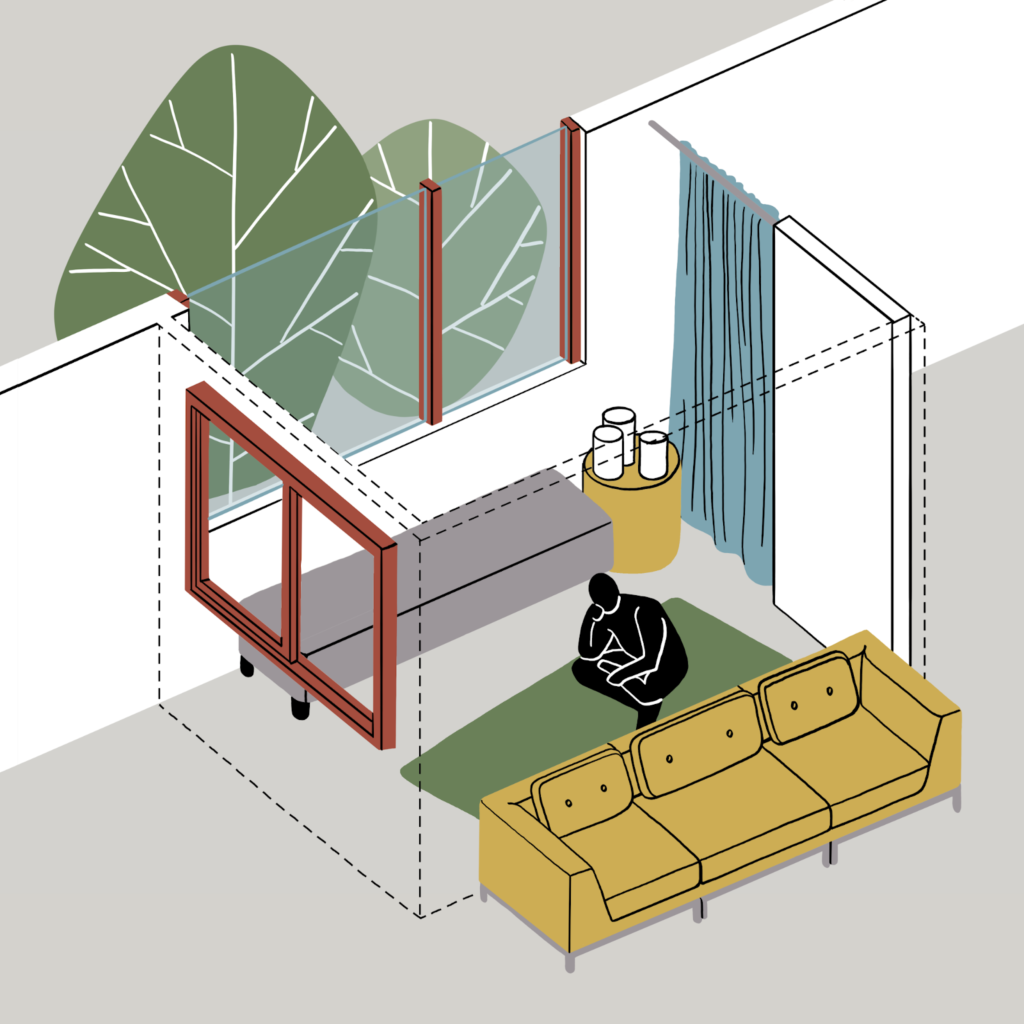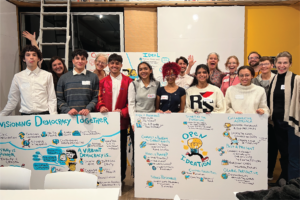Personal Space for Safety, Wellness and Autonomy
Key Points
-
Kids from all over the world tell us they want more quiet, small, reflective spaces in their school.
-
Creating quiet, small, reflective spaces in our schools support student agency, autonomy, and wellness.
-
Find the Calming Retreat Design Pattern and others related to agency, autonomy, and wellness at SchoolPatterns.com.

According to the World Economic Forum, the top ten job skills of tomorrow include self-management competencies such as active learning, resilience, stress tolerance and flexibility.
Are we creating spaces in our schools to support these skills? The answer is no, or rarely. When we engage students in vision and design pattern workshops, the need for quiet, small reflective spaces is always at the top of their list.
Susan Cain, in her book Quiet: The Power of Introverts in a World That Can’t Stop Talking, writes compellingly about the need for cave spaces, nests, small meeting rooms and low sensory rooms:
“At school, you might have been prodded to come “out of your shell”—that noxious expression which fails to appreciate that some animals naturally carry shelter everywhere they go and that some humans are just the same.”
The need for accessible breakout spaces and low sensory rooms that support all learners, including introverts and all neurodivergent learners, has long been recognized, but the solutions have often been based on myths about learning and psychology.
In an effort to create quiet, low sensory spaces for students that may feel overwhelmed by too much stimulation, designers have often created window-less, cell-like enclosures, making many learners feel even more anxious for having their sense of autonomy taken away. We often hear from well-meaning special education teachers that we should limit openings to high windows, so as not to distract individuals. However, views to green spaces actually have a calming effect.
The need for accessible breakout spaces and low sensory rooms that support all learners, including introverts and all neurodivergent learners, has long been recognized, but the solutions have often been based on myths about learning and psychology.
Randy Fielding
Curtains, typically relegated to residential use in the past, add a soft, personal touch to institutional spaces, while also providing acoustical absorption and a sense of autonomy in their easy adjustment. Soft seating, area rugs, a muted color palette and varied, low glare lighting are also important elements in creating quiet, reflective, human-centered spaces.
You can find sketches for cave spaces, small meeting rooms and low sensory spaces along with 70+ freely available Design Patterns at SchoolPatterns.com. School leaders, teachers, students, designers and community partners can use these patterns to identify the core elements to support their vision and goals for learning.
Design Patterns can be assembled to form an integrated ecosystem that includes the school’s vision, educational program, and physical space. Many schools will incorporate 20 or more patterns in their design–together they form a whole that is greater than the sum of the parts.
The library of Design Patterns continues to grow, and school design teams are invited to join our journey, contributing their ideas for new patterns to expand our collective knowledge base.






0 Comments
Leave a Comment
Your email address will not be published. All fields are required.